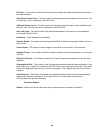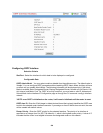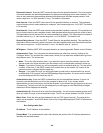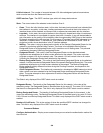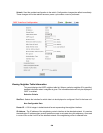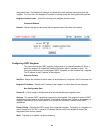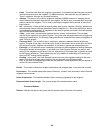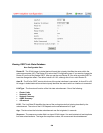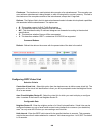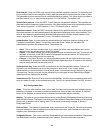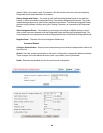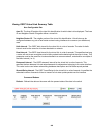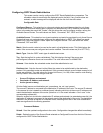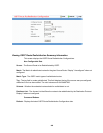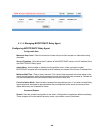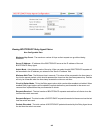
540
Checksum - The checksum is used to detect data corruption of an advertisement. This corruption can
occur while an advertisement is being flooded, or while it is being held in a router's memory. This field is
the checksum of the complete contents of the advertisement, except the LS age field.
Options - The Options field in the link state advertisement header indicates which optional capabilities
are associated with the advertisement. The options are:
Q - This enables support for QoS Traffic Engineering.
E - This describes the way AS-external-LSAs are flooded.
MC - This describes the way IP multicast datagrams are forwarded according to the standard
specifications.
O - This describes whether Opaque-LSAs are supported.
V - This describes whether OSPF++ extensions for VPN/COS are supported.
Command Buttons
Refresh - Refresh the data on the screen with the present state of the data in the switch.
Configuring OSPF Virtual Link
Selection Criteria
Create New Virtual Link - Select this option from the dropdown menu to define a new virtual link. The
area portion of the virtual link identification is fixed: you will be prompted to enter the Neighbor Router
ID on a new screen.
Area ID and Neighbor Router ID - Select the virtual link for which you want to display or configure
data. It consists of the Area ID and Neighbor Router ID.
Configurable Data
Neighbor Router ID - Enter the neighbor portion of a Virtual Link specification. Virtual links may be
configured between any pair of area border routers having interfaces to a common (non-backbone)
area. You only enter this ID when you are creating a new virtual link.
Hello Interval - Enter the OSPF hello interval for the specified interface in seconds. This parameter
must be the same for all routers attached to a network. Valid values range from 1 to 65,535. The default
is 10 seconds. .



